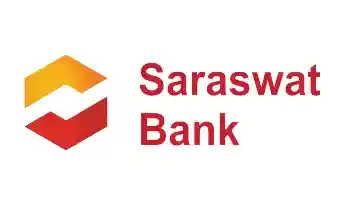Get instant loan offer suitable to your profile !


On this Page:
Read GyanDhan’s guide on how to refinance my student loan. Learn the meaning, process, eligibility criteria, and benefits of education loan refinancing.
Taking an education loan solves a major financing problem that many students face. While a loan approval eases the tension and the stress of paying back large sums of money, the repayment of the loan is the real challenge that often baffles students. Defaulting on loans is not an option as it negatively impacts the credit score. However, an easy way to reduce the financial; burden is to restructure the loan. Students often wonder how to refinance my student loan. Well, it is completely possible to refinance the education loan, meaning paying the existing loan with a new loan.

In simple terms, student loan refinancing is taking a new loan at a new interest rate to pay off the previous education loan. Refinancing aims to get a better rate of interest and different terms and conditions.
For example, you secured an education loan from a private lender in a hurry at a higher interest rate and unfavorable terms and conditions at the time of admission. To reduce the financial burden and interest rate, you can switch to a lender that is offering better terms and conditions. Most Indian lenders, including public banks, private banks, and Non-Banking Finance Companies (NBFCs) offer education loan refinancing options.

Most students are not aware that interest rates in refinanced education loans are lower. Let’s take an example -
You took an education loan of INR 20 Lakh at 12%, which has to be paid in 9 years (including 2 years of course of study). The interest that you will pay is INR 19,68,553. Now, if you refinance this education loan from a lender offering you a 10% interest rate upon graduation (ie, 7 years), the interest payable will effectively fall to INR 11,39,007. The difference is a massive INR 8,29,546.
Apart from a lower interest rate, some borrowers also refinance their secured education loan to an unsecured education loan. This frees up their property and reduces the financial burden on the family member who provided collateral.

 Combining different education loans: If a student is paying multiple loans taken for graduation and postgraduation, they can consolidate their loans instead of paying interest on these different loans.
Combining different education loans: If a student is paying multiple loans taken for graduation and postgraduation, they can consolidate their loans instead of paying interest on these different loans.
 Longer repayment tenure: If a student is unable to repay the loan in a stipulated time, restructuring the loan will help extend the loan repayment period. With an extended repayment period, the EMIs will be lower. However, students should keep in mind that in this case, the total interest paid will go up.
Longer repayment tenure: If a student is unable to repay the loan in a stipulated time, restructuring the loan will help extend the loan repayment period. With an extended repayment period, the EMIs will be lower. However, students should keep in mind that in this case, the total interest paid will go up.

The best time to refinance your education loan is when you start working, due to the following reasons -
 A steady job will reduce the risk of default.
A steady job will reduce the risk of default.
 You are in a better position to negotiate terms and conditions for your new education loan.
You are in a better position to negotiate terms and conditions for your new education loan.
 The bank is aware of your income and ability to repay the loan, hence, you will qualify for a lower interest rate and better terms and conditions.
The bank is aware of your income and ability to repay the loan, hence, you will qualify for a lower interest rate and better terms and conditions.

Lenders often consider factors such as borrower's income, credit history, credit score, debt-to-income ratio, financial behavior, employment history, and residency status before refinancing an education loan. To opt for education loan refinancing students must fulfill the following eligibility criteria -
 Students must have an existing education loan to study abroad or in India.
Students must have an existing education loan to study abroad or in India.
 Students must have completed their studies and have started loan repayment. The EMIs should have been paid timely. This means that there are effectively no more disbursements left from the previous lender.
Students must have completed their studies and have started loan repayment. The EMIs should have been paid timely. This means that there are effectively no more disbursements left from the previous lender.
 Working professionals with an existing student loan can also refinance the loan.
Working professionals with an existing student loan can also refinance the loan.

The process to refinance an education loan is as follows -
Step 1: You will have to approach the current lender and apply for loan foreclosure with a loan foreclosure application.
Step 2: After exploring a better loan option, apply to refinance your existing education loan. Arrange documents required to apply for the loan.
Step 3: Once the lender approves your loan, it will issue a cheque for the outstanding amount to the previous lender.
Step 4: Once the cheque is cleared, the previous lender forecloses the loan and releases your original documents.

Here are a few documents that are required to transfer the student loan -
 Loan application form
Loan application form
 Documents given by the previous lender
Documents given by the previous lender
 2 passport photographs
2 passport photographs
 KYC of the borrower and the co-applicant - Aadhar card, PAN card
KYC of the borrower and the co-applicant - Aadhar card, PAN card
 Proof of identity
Proof of identity
 Proof of residence
Proof of residence
 Bank account statements of the student/co-borrower/guarantor of the last 6 months. Other financial documents such as the IT Return, proof of income, and a brief statement of assets and liabilities of the parent/co-borrower.
Bank account statements of the student/co-borrower/guarantor of the last 6 months. Other financial documents such as the IT Return, proof of income, and a brief statement of assets and liabilities of the parent/co-borrower.

 Secured Education Loan: If the student has applied for a secured education loan, the existing collateral will be taken over by the new lender.
Secured Education Loan: If the student has applied for a secured education loan, the existing collateral will be taken over by the new lender.
 Unsecured Education Loan: If the student is transferring the loan from a private lender to a public bank, they will have to pledge collateral as they provide loans with collateral above INR 7.5 lakhs. The collateral must be with a value equal to the loan amount.
Unsecured Education Loan: If the student is transferring the loan from a private lender to a public bank, they will have to pledge collateral as they provide loans with collateral above INR 7.5 lakhs. The collateral must be with a value equal to the loan amount.
 Loan Margin: There is no loan margin when an education loan is refinanced. Public banks such as SBI will give you a 100% loan on the collateral value.
Loan Margin: There is no loan margin when an education loan is refinanced. Public banks such as SBI will give you a 100% loan on the collateral value.
Read more about: Transferring Your Education Loan: How and When to Do It
The rest of the terms and conditions of an education loan are similar to that of a regular education loan. If you are worried about the process and your eligibility, just check your loan eligibility with us.

Borrowers should consider the following points while refinancing their education loan.
 Compare the foreclosure charges to the previous lender and the sum of the processing fee and the interest rate charged by the new lender. Consider refinancing only if you are saving money.
Compare the foreclosure charges to the previous lender and the sum of the processing fee and the interest rate charged by the new lender. Consider refinancing only if you are saving money.
 The CIBIL score should be more than 750 to get better terms and conditions and a lower interest rate. If the CIBIL score is less than this, the interest rate offered will be high, thereby not helping you at all.
The CIBIL score should be more than 750 to get better terms and conditions and a lower interest rate. If the CIBIL score is less than this, the interest rate offered will be high, thereby not helping you at all.
 Opt for refinancing the education loan in the early stages of loan repayment.
Opt for refinancing the education loan in the early stages of loan repayment.
 Read the loan transfer documents carefully.
Read the loan transfer documents carefully.
Education loan refinancing can be a strategic financial move for many graduates seeking to alleviate the burden of student debt. By understanding the process and meeting the eligibility criteria, borrowers can secure more favorable loan terms, reduce their interest rates, and achieve a more manageable repayment plan. If you considering taking an education loan or refinancing your education loan then, GyanDhan’s services can proof be invaluable for you. We at GyanDhan are partnered with more than 15 lenders, where we offer customized education loan deals catering to one’s unique needs. It's important for potential refinancers to carefully assess their financial situation, compare different refinancing options, and choose a plan that aligns with their long-term financial goals. With the right approach, education loan refinancing can be powerful to gain financial freedom and invest in one's future. To start your refinancing education loan journey with GyanDhan, check your education loan eligibility now!
Check Your Education Loan Eligibility

Ask from a community of 10K+ peers, alumni and experts
Trending Blogs
Similar Blogs

Network with a community of curious students, just like you
Join our community to make connections, find answers and future roommates.. Join our CommunityCountry-Wise Loans
Best Lenders for Education Loan

ICICI Bank

Axis Bank

Union Bank

Prodigy

Auxilo

Credila

IDFC

InCred

MPower

Avanse

SBI

BOB

Poonawalla

Saraswat